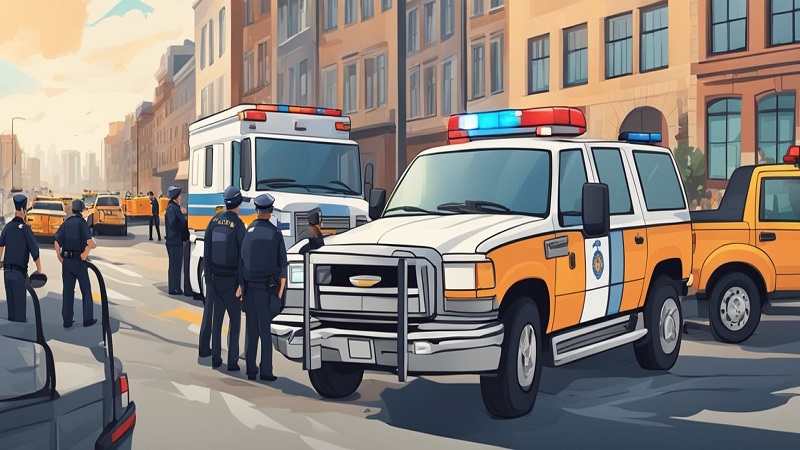A car accident can happen in an instant, leaving you confused, injured, and unsure of what steps to take next. From documenting the scene to seeking medical attention, the actions you take immediately following a collision can significantly impact your physical recovery and legal outcomes. Knowing exactly what to do after a car accident can protect your health, your rights, and your financial future.
The experienced team of Springfield car accident lawyers understands how overwhelming these situations can be. Many accident victims make critical mistakes in the moments and days following a crash that can compromise their personal injury claims. These errors often occur simply because people are unfamiliar with proper post-accident protocols.
This guide outlines the essential steps everyone should take after being involved in a vehicle collision. Whether the accident seems minor or involves serious injuries, having this knowledge can make a substantial difference in both your recovery process and any potential legal proceedings you may need to pursue with an attorney.
Immediate Steps After a Car Accident
The moments following a car accident are critical for protecting your health, legal rights, and insurance claims. Taking proper action immediately can significantly impact any subsequent personal injury claims and help establish a clear record of events.
Ensuring Safety and Medical Attention
Move to a safe location if possible to prevent additional accidents. Turn on hazard lights and set up warning triangles or flares if available. If the vehicles can be moved safely, pull them to the shoulder or nearby parking lot.
Check yourself and passengers for injuries before assisting others. Even if injuries seem minor, seek medical attention promptly. Some serious injuries like whiplash or internal bleeding may not show immediate symptoms.
Call 911 immediately if anyone is injured. Medical documentation creates an official record linking injuries to the accident, which is crucial for insurance claims and potential legal proceedings.
Never refuse medical evaluation at the scene. Some injury victims compromise their claims by delaying treatment, making it difficult to connect injuries to the accident later.
Documenting the Scene and Exchange Information
Take photos of all vehicles involved from multiple angles. Document damage, skid marks, road conditions, traffic signs, and the overall accident scene. These images can help establish negligence and liability.
Collect information from all parties involved:
- Full names and contact information
- Driver’s license numbers
- License plate numbers
- Insurance company names and policy numbers
- Vehicle makes, models, and years
Identify witnesses and record their contact information. Their accounts may provide valuable perspectives on how the accident occurred.
Make notes about the accident while details are fresh. Include weather conditions, time of day, and your recollection of events. Avoid discussing fault or making statements that could be interpreted as admitting liability.
Notifying Relevant Parties
Contact the police to file a report, even for minor accidents. A police report provides an official account of the incident and is essential for insurance claims. Request a copy or the report number before leaving.
Notify your insurance company promptly, regardless of fault. Most policies require immediate reporting of accidents. Provide facts only—avoid speculating about fault or making recorded statements without legal guidance.
Consult with a personal injury lawyer before accepting any settlement offers from an insurance company. Insurance adjusters often make quick, low offers before the full extent of injuries is known.
Avoid posting about the accident on social media. Insurance companies routinely monitor social media, and posts can be used to dispute or minimize injury claims.
Navigating Post-Accident Legalities
The aftermath of a car accident involves several legal considerations that can significantly impact your recovery and financial situation. Understanding your rights and responsibilities is crucial for protecting your interests during this challenging time.
Understanding Insurance Claims and Coverage
After reporting your accident, you’ll need to navigate the claims process with your insurance company. Most policies require prompt notification, typically within 24-48 hours of the incident. Document all communications with insurers, including the date, time, and name of representatives you speak with.
No-fault insurance states operate differently than at-fault states. In no-fault states, your own insurance covers your medical expenses regardless of who caused the accident. At-fault states require the responsible party’s insurance to cover damages.
Insurance adjusters may contact you quickly after an accident. Be cautious about providing recorded statements without legal consultation. Their job is to minimize the company’s financial liability.
Policy limits play a crucial role in claim outcomes. Review your coverage carefully to understand what expenses are covered and to what extent. Uninsured/underinsured motorist coverage becomes essential if the at-fault driver lacks adequate insurance.
Seeking Legal Counsel and Representation
Consulting with a Springfield car accident lawyer can make a significant difference in your case outcome. Attorneys who specialize in car accidents understand the nuances of local traffic laws and insurance regulations.
Most personal injury lawyers offer free initial consultations and work on a contingency fee basis. This means they only collect payment if they secure compensation for you. This arrangement makes legal representation accessible regardless of your financial situation.
When selecting an attorney, consider their:
- Years of experience handling similar cases
- Recognition within the legal community
- Track record of successful settlements and verdicts
- Disciplinary status with the state bar association
Legal representation becomes particularly important in cases involving serious injuries, disputed liability, or when insurance companies offer insufficient settlements. An attorney can help gather evidence, consult with experts, and build a compelling case for maximum compensation.
The Road to Compensation and Settlements
Compensation after a car accident typically covers several areas of damages. Medical bills, including current treatment and future medical needs, form the foundation of most claims. Lost wages and diminished earning capacity address the financial impact of your injuries.
Pain and suffering compensation acknowledges the physical and emotional distress caused by the accident. This non-economic damage can be substantial in serious injury cases. Some claims also include loss of consortium, which recognizes the impact on relationships with spouses or family members.
Most car accident cases settle before trial. The settlement process typically involves:
- Calculating the full extent of damages
- Submitting a demand letter to the insurance company
- Negotiating with adjusters to reach a fair agreement
If negotiations stall, your attorney may recommend filing a lawsuit. Even after litigation begins, settlement discussions often continue. The Springfield courts have established precedents that guide fair compensation for various types of injuries and circumstances.

